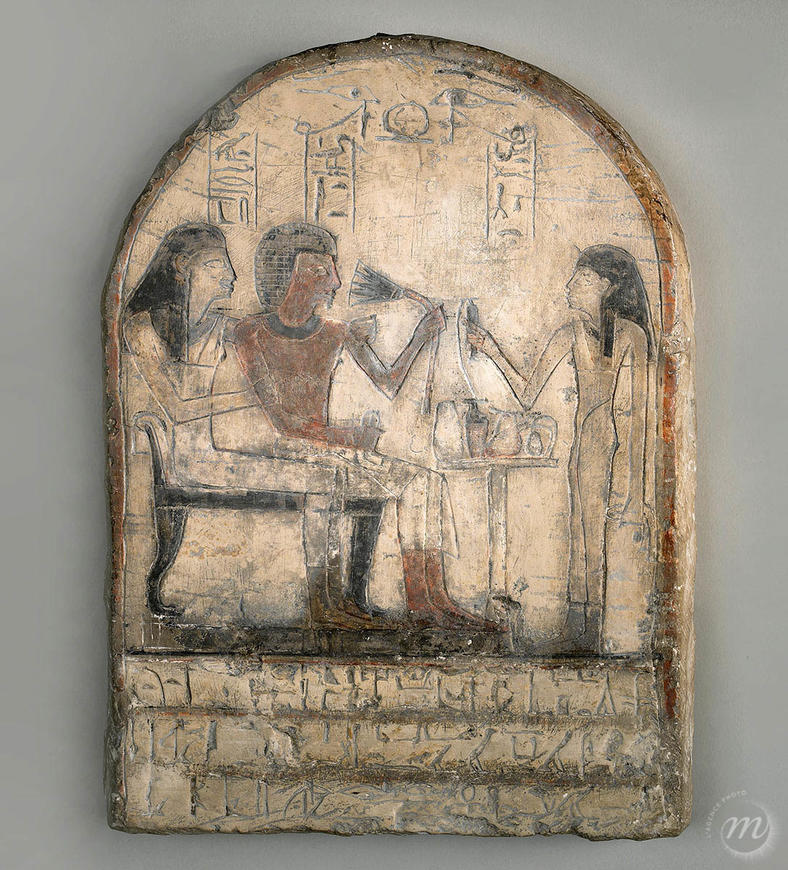The scene depicted is always organised in a similar way. A man or woman, alone or with others, holding a lotus flower, sits in front of a pedestal table on which ox heads and legs, vases, and even loaves of bread are piled up. In front, another figure pours water from an elongated vase.
The full meaning of the image is conveyed in the inscription below: the owner of the stele, who has died, asks the funerary gods, most often Osiris, to give him offerings throughout his time in the afterlife. For the Egyptians, food was a necessity, both while alive and after death.
Such was this concern that an entire funerary cult was established to provide for the deceased's nutritional needs. Several festivals were held throughout the year, during which the family went to the tomb’s chapel to honour the statue of the loved one and leave offerings. On our stele, it’s the wife who fulfils this role by making a libation (an offering of water) to her husband. However, the Egyptians, who were highly pragmatic, imagined that, as time passed, the funerary cult would no longer be maintained so diligently. That’s why they placed images in the tombs, engraving in stone a gesture of eternal offering.
Inv. : Ant 713

The scene depicted is always organised in a similar way. A man or woman, alone or with others, holding a lotus flower, sits in front of a pedestal table on which ox heads and legs, vases, and even loaves of bread are piled up. In front, another figure pours water from an elongated vase.
The full meaning of the image is conveyed in the inscription below: the owner of the stele, who has died, asks the funerary gods, most often Osiris, to give him offerings throughout his time in the afterlife. For the Egyptians, food was a necessity, both while alive and after death.
Such was this concern that an entire funerary cult was established to provide for the deceased's nutritional needs. Several festivals were held throughout the year, during which the family went to the tomb’s chapel to honour the statue of the loved one and leave offerings. On our stele, it’s the wife who fulfils this role by making a libation (an offering of water) to her husband. However, the Egyptians, who were highly pragmatic, imagined that, as time passed, the funerary cult would no longer be maintained so diligently. That’s why they placed images in the tombs, engraving in stone a gesture of eternal offering.
Inv. : Ant 713